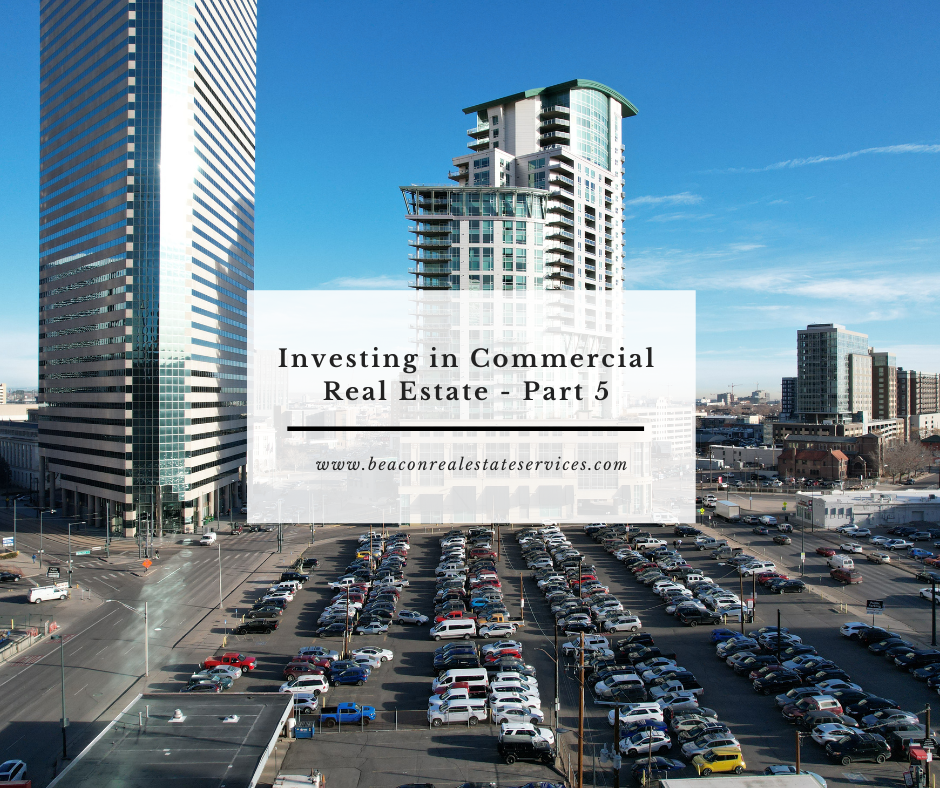
In Part 3 and Part 4, of this series on commercial real estate investing, we discussed two very different types of properties. Both properties were offered for sale at $1,000,000 but each property had very different returns on the cash invested because of the nature of those properties at the time of acquisition. It was suggested at the very end of Part 4 that even though one property appeared to be very superior to the other, over time that could change for a variety of reasons.
Sometimes a property may initially have a low purchase price because it has not been well taken care of and possibly the rents are below market. But to the trained eye, this actually could be a great opportunity to do some very cost-effective improvements to the property and then over time, gradually raise the rents. If the surrounding properties suggest that the rents could be higher because other properties are renting at higher rates, then some upgrading that might be as simple as paint and new flooring might allow rent increases. Furthermore, a good leasing strategy can also increase the rents making the investment more successful.
Different Scenarios
For example, if the Retail property provided a first year ROE to the investors of $29,537 but the operating costs, that could not be passed along to the tenants, increased faster than the rents could be increased, then the cashflow to the investors would decrease annually thereafter. This could happen if the property had top of the market rents on the existing leases or long-term leases in place with low or no increases in rent. If at the end of a 10-year period of time, that first year ROE shrunk from 11% in the first year to as little as 4% by year 10. The total return wouldn’t be as good.
On the other hand, if the Flex Space project that started at a 1.6% ROE, were to increase its rents annually by 10% per year, because of the additional funds invested to fix the property up while holding the operating expenses to an annual increase of 3%. Then at the end of 10-years, the net income would have increased from $75,000 to $240,037, which would be a whopping $165,037 more! Since the annual debt service would remain the same for those ten years, the cashflow to the owners would have increased from $5,537 to $170,574 in the tenth year!
What this equates to is that the Flex Space property would have a far higher value at the end of 10- years when the investors decide to sell the property than the Retail property.
Obviously, the point of this example is to illustrate that one property may initially appear to be less desirable than another property that an investment group is considering, but a skilled real estate professional can ferret out opportunities for amazing asset appreciation that a less skilled agent would not spot.
How Real Estate Investments Make Money
In selling the investment property after 10-years, the group made money in several ways from this investment.
- There would be the annual cashflow, after debt service, to the investment group.
- There would also be the gain on sale because the properties would have likely gone up in value.
- The loan would have been paid down.
- Then there are some tax deductions that relate to depreciation of the property which sheltered some of the annual cashflow.
- Lastly there is the opportunity for the investment group to defer the capital gains tax when they sell the property by exchanging into another investment property.
I think it’s clear why people, particularly really savvy folks, invest in commercial real estate through a seasoned and well trained commercial real estate firm. This is how wealth is built and very few wealthy people don’t invest in commercial real estate.
Wrapping Up
Next month’s issue will go into a bit of detail about the tax deferring of capital gains when a property is sold, which is known by the IRS designation as a 1031 Tax Deferred Exchange. It’s an amazing tool that our government has created to encourage investing in real estate, but is not well understood, so we’ll devote next months installment in this series on this issue. We’ll also cover the income tax deductions that investors enjoy via depreciation deductions from taxable income. Until then, if you have any questions about anything thus far in this series, Justin Reyher or Stephanie Ahle can be reached at Beacon Real Estate Services via phone or email.
Author:
Craig Rathbun
Senior Advisor at Beacon